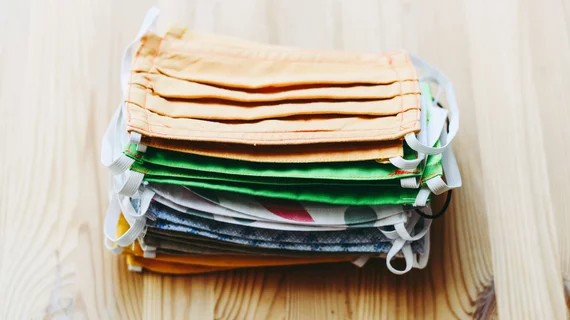Top 6 types of germ-blocking face mask
Pitting popular styles and materials of COVID-protective face masks against one another, researchers have come back with results that confirm what most every healthcare leader would presume.
Still, in the heat of the present pandemic, the findings are fascinating even when they’re not startling—although in at least one instance they’re both.
In general order of least to most effective, by HealthExec’s reading of the results:
6. Cotton t-shirts pulled up over the mouth and nose. “Only slightly better than wearing no mask at all,” the team reports in a news item from the University of Arizona, where the study’s lead author, Amanda Wilson, is a doctoral candidate.
5. Scarves. “Reduced infection risk by 44% after 30 seconds and 24% after 20 minutes.”
4. Tea towels, cotton-blend fabrics, antimicrobial pillowcases and other nontraditional materials. Mileage surely varies quite widely in this range of options.
3. Vacuum cleaner filters. Surprisingly, these can be inserted into filter pockets in cloth masks, Wilson and colleagues report. They found this creative repurposing reduced infection risk by 83% for a 30-second exposure and 58% for a 20-minute exposure.
2. N95 and surgical masks. Solid choices, no surprises.
1. N99 masks. “[E]ven more efficient at filtering airborne particles than N95 masks … obviously one of the best options for blocking the virus, as they can reduce average risk by 94% to 99% for 20-minute and 30-second exposures.” The downsides: “[T]hey can be hard to come by,” Wilson notes, “and there are ethical considerations such as leaving those available for medical professionals.”
In the UA news item, Wilson underscores the importance of proper use regardless of mask design or material.
“Also, we were focusing on masks protecting the wearer, but they’re most important to protect others around you if you’re infected,” she adds. “As our model shows, the amount of infectious virus you’re exposed to has a big impact on your infection risk and the potential for others’ masks to protect them as well.”
The study is running in the Journal of Hospital Infection. Journal publisher Elsevier has posted it in full for free on PubMed.

